(Last updated on February 7th, 2023)
Purchasing a Peloton bike gives you one of the best indoor cycles on the market and access to its popular interactive platform filled with motivating workouts and programs. Since late 2020, Peloton has had two bikes to choose from to suit your exercise needs: the Peloton Bike and the Peloton Bike+. The Bike+ is outfitted with a handful of new features and, expectedly, comes with a higher price tag.
In this article, I’ll explain all the differences between the models so you can make the right decision for your workouts and your wallet.
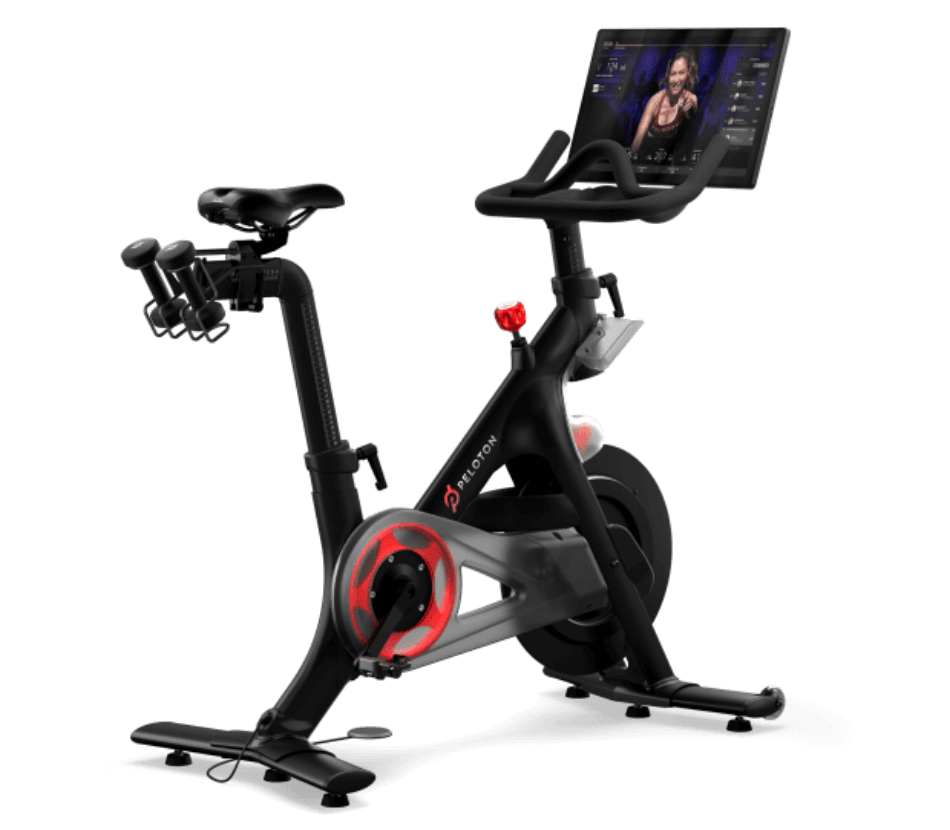
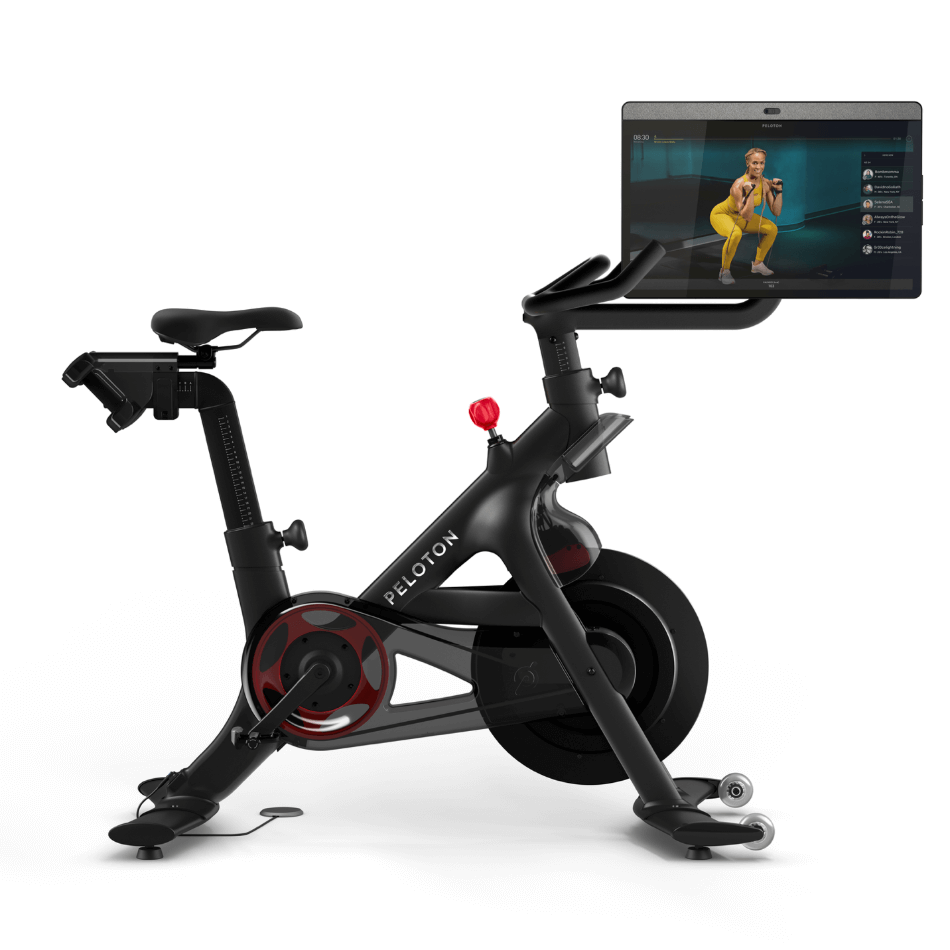
Now is the perfect time to invest in an indoor bike so you can get fit from the comfort of your own home. Over the past two years, the COVID-19 pandemic has sent Peloton sales sky high. This new demand transformed the Peloton community into a widespread network of enthusiastic riders. Last year, supply chain issues caused a wait time of 6 to 8 weeks to get the new Bike+ but current delivery estimates are around 1 to 2 weeks.
I’ll be judging the models based on price, design and key features, connectivity, and workouts and programs. Read on for an in-depth comparison of these two bike offerings from industry leader Peloton.
The Original Peloton Bike
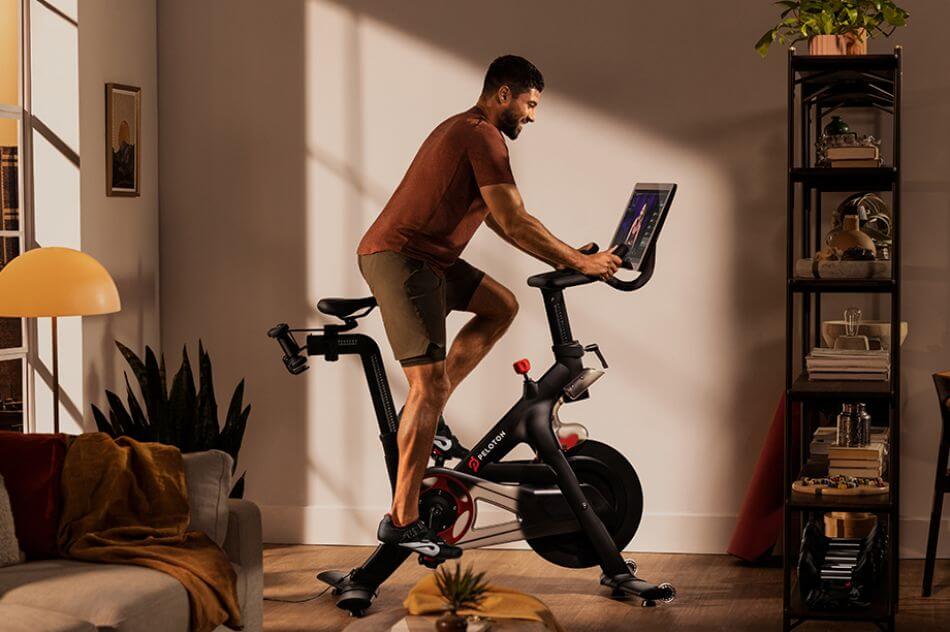
PROS
- Much more affordable Peloton option
- Large quality touchscreen
- Super quiet belt drive
CONS
- Can’t use other entertainment apps on the screen
- Doesn’t hook up with Apple watch
As the indoor bike that skyrocketed Peloton’s popularity, the original model offers a quality cardio workout without the extra bells and whistles. Starting at $1,495, the original Peloton Bike is $700 cheaper than the Bike+, so it’s a more affordable way into the large Peloton community and on-demand classes.
The Peloton brand was born in 2012 and launched its flagship product, the Peloton Bike, in 2014 to bring the studio cycling craze inside your own home. The Peloton Bike quickly established a dedicated following which blossomed into the huge community of instructors, pro athletes, and stay-at-home riders that there is today.
Back then, Peloton was one of the only boutique indoor cycling brands, but there are plenty of rival options on the market today. That said, Peloton continued to innovate and introduced the upgraded Peloton Bike+ in September 2020, simultaneously lowering the original bike’s price tag of $1,895 by $400.
Price: $1,495
The New Peloton Bike+
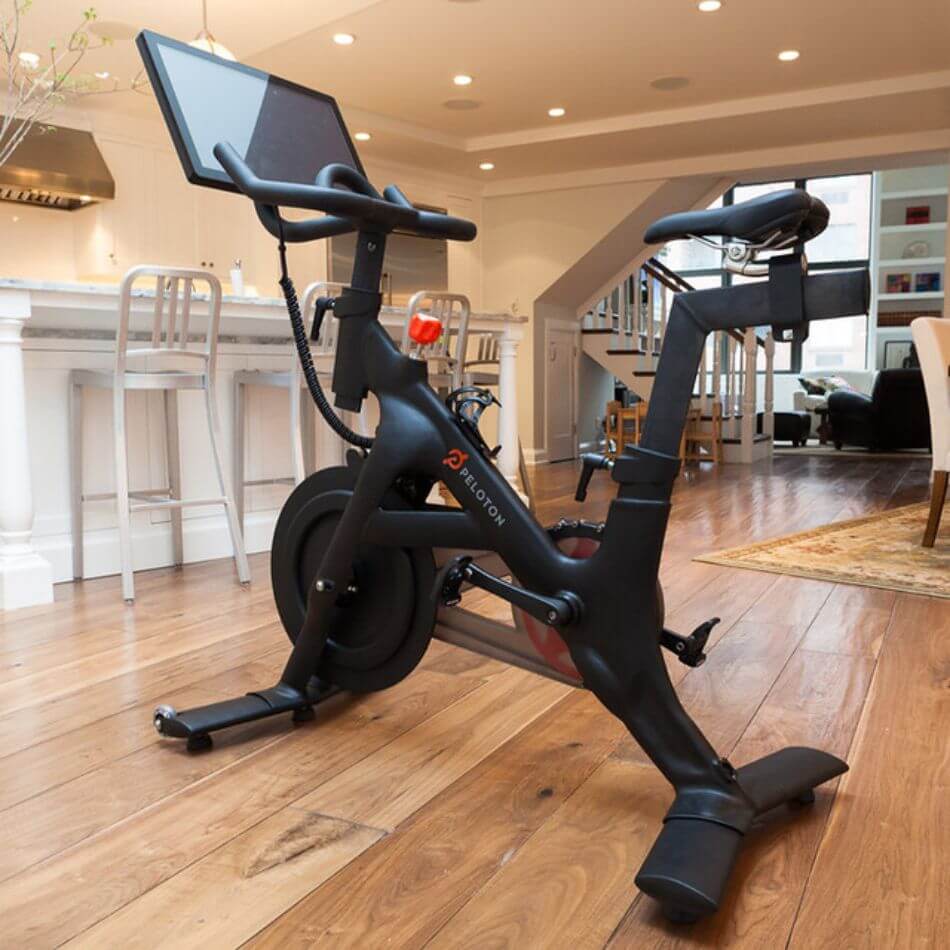
PROS
- 23.8″ HD, anti-reflective touchscreen that rotates 360°
- Auto Follow feature
- Upgraded speakers
- Apple Watch and Apple Gymkit integration
CONS
- Hefty price tag
- Only allows the use of Peloton software
The latest and greatest in the Peloton line-up, the Bike+ packs in new features of a home gym and personal trainer. The upgraded and bigger touch screen rotates 360° so you can follow along with other Peloton workouts or yoga sessions off the bike. When you are in a class, the all-new Auto Follow option on the resistance knob digitally adjusts your bike’s resistance in live time according to the instructor’s recommendation you won’t need to lift a finger.
My main takeaway from the Bike+ is that it’s probably not the right bike for everyone, but it’s the perfect bike for some. The original Bike is already a top-tier stationary bike with access to the entire Peloton network, so who needs the more expensive Bike+ version? If you are dedicated to working out from home and are excited about the Peloton community of instructors and classes, the Bike+ is the best option on the market.
Price: $2,195
*Price is down for a limited time (the original price is $2,495)
Original Bike Vs. Bike+
| Peloton Bike | Peloton Bike+ |
|---|---|
| Starting at $1,495 | Starting at $2,195 |
| 2’ x 4’ floor footprint | 2’ x 4’ floor footprint |
| 21.5” display screen | 23.8” anti-reflective screen |
| Touchscreen tilts to adjust for height | Touchscreen tilts and rotates 360° |
| Two 10 watt speakers | Two front-facing speakers and two rear-facing woofers for improved audio quality |
| Manual resistance adjustment knob | Manual knob and automatic (Auto-Follow) resistance adjustment |
| 5-megapixel front camera | 8-megapixel front camera with privacy cover |
| Standard USB port for charging devices | USB-C port for charging devices |
| Bluetooth compatibility | Bluetooth compatibility |
| Electronic calibration for more accurate power output readings | |
| Apple Watch and Gymkit compatibility |
Price
Winner: Original Bike
The original Peloton Bike starts at $1,495, and the Bike+ is currently offered at $2,195 until the end of the holiday season on January 9th. At the time of purchase, both models have options to upgrade the package to include additional equipment like bike shoes, a foam roller, weights, and other useful gear.
The Essentials package tacks on $200 for a pair of Peloton bike shoes and a couple of other goodies. The Works adds more workout equipment for $300 more than the basic package. Lastly, for $500, the Family option includes two pairs of shoes, water bottles, a foam roller, and more. You can explore the details on the specific packages here.
The $39/month All-Access Membership is sold separately, but it’s required when you purchase a Bike+ package. It’s a cheaper subscription than cycling classes at a gym but remains a substantial expense after the initial bike purchase. You can pause or cancel your subscription to live and on-demand classes at any time.
Good news if you are looking to upgrade from your original Peloton bike. You can trade it in for a $700 rebate when you purchase the new Bike+ and receive a Yoga and Toning accessories package too.
You May Also Like:
Design and Key Features
Winner: Bike+
The main function and design as an indoor bike is the same between both models. The inner workings, quiet belt drive, ergonomic fit, and highly adjustable positioning remain unchanged in the Bike+. Both bikes have a floor footprint of 4’ by 2,’ but Peloton recommends having more space on all sides for safe and comfortable riding. Peloton’s website even has a feature for mobile phones where you can see how the bike fits in your home, projecting it into your room using augmented reality.
Bike+ has a bigger touchscreen that rotates 360°
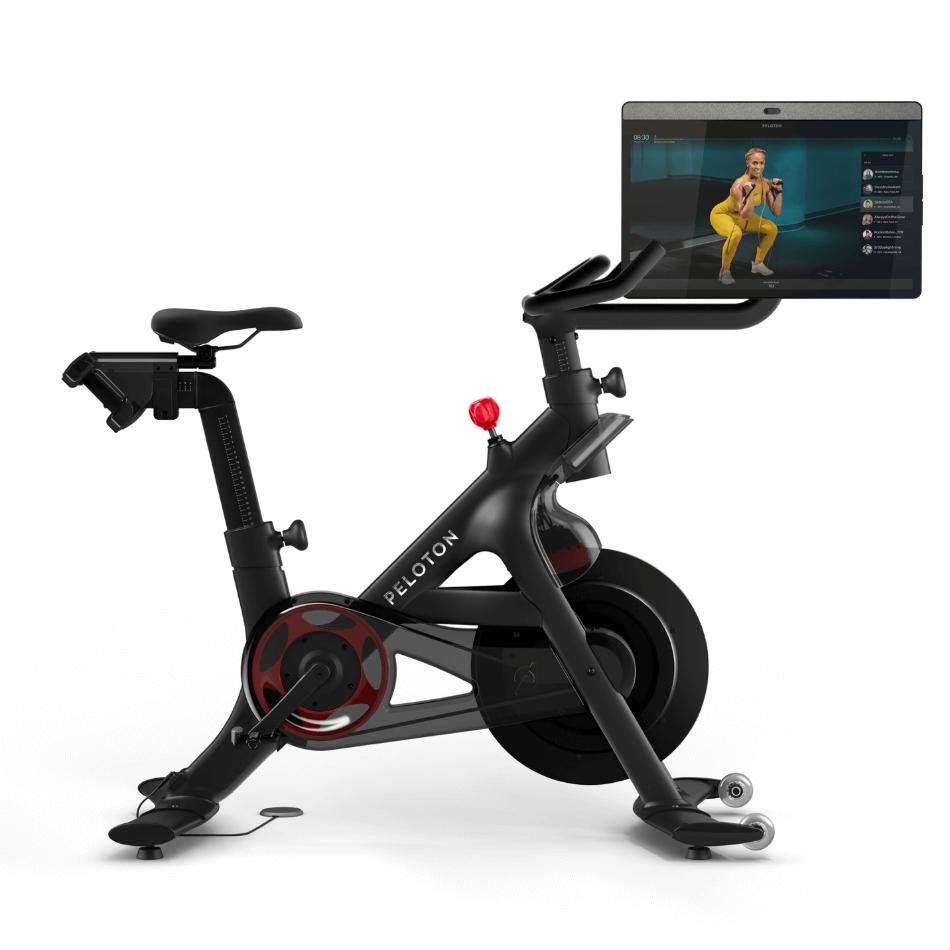
The most noticeable change from the original Bike is the bigger 23.8” anti-reflective touchscreen that can rotate 360°. The screen on the older model only tilts to adjust for rider height, so you can’t view the display while off the bike. With the growing catalog of off-bike programs like yoga, weights, and stretching, more users follow Peloton workouts on the screen from their mat next to the bike.
Auto-Follow
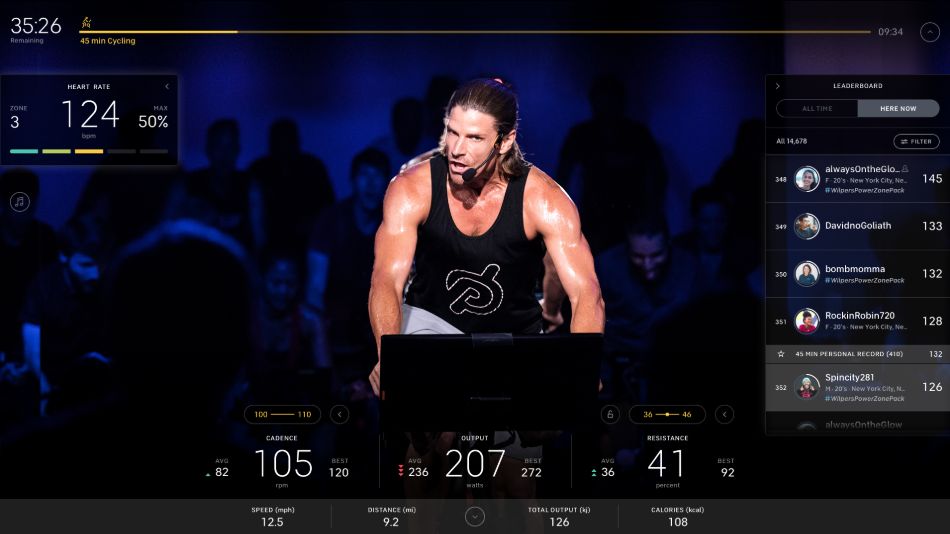
A major upgrade from the original Peloton Bike is the automatic resistance adjustment feature Auto-Follow. Now, the Bike+ will automatically follow instructors’ cues during classes and digitally change the resistance so you can focus on your workout. You can still manually adjust the resistance on the Bike+ by using the red knob, but this new feature makes classes even more immersive.
We all know the feeling of pushing through an intense spinning class, and the last thing you want to do in the middle of a sprint is break your concentration and fumble around with the resistance knob. It’s a high-tech touch that isn’t exclusive to Peloton models, but it definitely boosts the experience of the already impressive workout classes.
Better speakers on the Bike+
Peloton decided to upgrade the audio system on the Bike+ by pairing two stronger front-facing speakers with rear-facing woofers for a higher quality sound experience. After all, the booming and energetic music playing during workouts is a big reason riders stay motivated! The original Bike only has two rear-facing speakers.
For some riders, though, the improved sound system won’t make a difference. If you normally ride or work out with headphones, you won’t utilize the integrated speakers. Many Peloton users gravitated towards it because of the ultra-quiet pedaling perfect for a shared living space or small apartment, especially paired with headphones.
Connectivity
Winner: Bike+
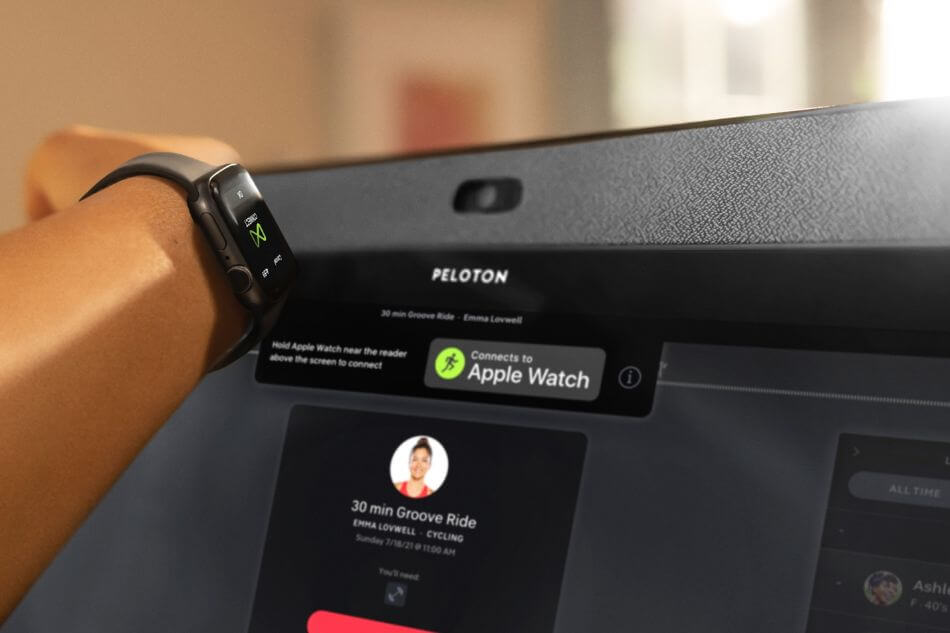
One of the most notable upgrades to the Bike+ is the Apple Watch and Apple Gymkit integration to track personalized data every time you work out. The Bike+ seamlessly syncs up to your watch and unique data to deliver more accurate metrics like calories burned and power output while you cycle.
Of course, this feature of the Bike+ is really only useful if you have an Apple Watch. However, Peloton aficionados are often fans of Apple products, too. Having a Peloton Bike+ might be the extra convincing you need to finally treat yourself to another Apple gadget. That is if you’ve still got some cash leftover.
Still doesn’t support other entertainment accounts
Unfortunately, neither Peloton bike allows users to sync other digital or entertainment accounts beyond the Apple Gymkit. This means you can’t take advantage of the large screen to watch Netflix, Hulu, and other streaming apps while going through your workout. Maybe the pared-down options will encourage you to hop into a Peloton class, but the lack of entertainment options is mainly a frustrating quality of such a pricey bike.
Competing brands like Echelon, Bowflex, and Stryde allow users to access their streaming accounts to have a wider variety of content to keep your mind off of your thigh-burning workout. Peloton’s influence in the market enables them to forgo this feature, but, surprisingly, it’s not included on such a high-tech bike even traditional stationary bikes and treadmills at the gym have TV shows and movies!
Workouts And Programs
Winner: It’s a tie!

One of the main reasons to own a Peloton bike is to access their live and on-demand workout classes. The Peloton brand has established its reputation of well-produced workouts with personable trainers and motivating music. The popularity of this community has even transformed some of the trainers into mini-celebrities!
Riders of either Peloton bike can browse and stream the workouts as long as they have the $39/month All-Access Membership. Peloton classes started with only cycling, but have expanded to yoga, running, meditation, walking, bike bootcamps, stretching, and more. There are also longer-term programs that last a few weeks to master the basics of cycling, training regimens, and extended challenges.
There is an impressive amount of content to keep you motivated during your workouts. No matter your exercise style if you prefer booming music, relaxed yoga, cheerleading trainers, or more straightforward instructors there is a class for you. Take time to explore the different trainers on the platform and discover which ones you like the best. I’ve found that variety is the key to taking your mind off hard workouts and reaching your fitness goals. Rest assured that you’ll never get bored with the huge quantity of Peloton programs at your fingertips.
A Note On Delivery/Wait Time
Peloton currently lists the delivery wait times for both models as within 1-2 weeks. This is a big improvement on the wait times early last year which were upwards of 6-8 weeks. They have seemed to get their supply chain back on track mostly. The current wait times are updated based on the past seven days so you can check their websites for regular updates closer to your purchase.
Is The Bike+ Worth The Extra Money?

The Peloton Bike+ comes equipped with a few key upgrades, but do the extra features justify the hefty price tag? Its function as an indoor bike is the exact same as the original model, so the $700 price jump to the Bike+ comes from the auxiliary features. Read through this mini guide to find out if you’re better off with the tried-and-true original Peloton Bike or if the bling Bike+ is a worthwhile investment.
Do I have space for it?
Both models have a 2’ by 4’ footprint, but the 360° rotating touchscreen on the Bike+ assumes you will be using it for other workouts too. Peloton has been advertising its growing collection of yoga and off-bike workouts available on its platform. The new display swivels so you can complete these sessions next to the bike. Think about if you have plenty of space for the bike and a yoga mat to take advantage of one of the main features unique to the Bike+.
Will I take advantage of the additional features?
To make sure the Bike+ is the right option for you, reflect on if you will use it enough to justify the higher price tag. The $700 difference (and required $39/month Peloton subscription) between the original model is nothing to sneeze at. Think about your current workout routine if you already do indoor workouts or plan your goals for starting cycling sessions.
More specifically, are you going to utilize the extra features of the Bike+? The rotating screen will come in handy if you plan to work out to Peloton classes while off the bike. Also, if you are an avid Apple Watch user, the Apply GymKit compatibility will provide personalized metrics to keep you updated and motivated about your progress.
Will it save me money in the long run?
Depending on your lifestyle and exercise routine, the Bike+ could be a worthwhile purchase compared to a gym or spinning class membership. Gym membership prices vary depending on where you live and the quality of the services offered. They can run anywhere between $15 to over $200 a month. Of course, you have to leave your house and still might not have access to top trainers or classes.
Peloton offers a $52/month payment plan for the Bike+ basic package. The All-Access Membership for classes is an additional $39/month. That works out to at least $91/month, so if you prefer to exercise from home and are excited to take lots of Peloton classes, the per workout cost will probably be less than in-person cycling studios.
Final Thoughts
The original Peloton Bike started a revolution back in 2014, and many other brands created their versions of indoor bikes outfitted with workout technology. In 2020, Peloton finally responded to its rivals and improved on the original model when it introduced the Bike+. With the timely launch (in the middle of the at-home workout craze during the pandemic), Peloton maintains its reputation as a leading innovator of indoor bikes.
That said, the high quality and upgrades on the Bike+ will cost you a pretty penny. Peloton didn’t reinvent the wheel with this new model, so it still shares a lot of elements with the previous version. Still, the included upgrades are smart improvements because they respond to customer feedback and the growing amount of on-bike and off-bike workout content from Peloton.
The original Bike is more affordable than ever and gives you the same access to Peloton’s expansive network of workouts and trainers. This is arguably the main appeal of Peloton’s sleek and well-designed products, so you can’t go wrong choosing this cheaper option. But if you are already a dedicated Peloton aficionado or planning a serious training regimen, the Bike+ will allow you to get the most out of every workout.
Frequently Asked Questions
While the inner workings are the same, the more expensive Peloton Bike+ features various small upgrades. The Bike+ has a bigger touchscreen that rotates 360° and the Auto-Follow feature that automatically adjusts resistance during Peloton instructor-led workouts. The Bike+ also connects to your Apple Watch to provide more accurate metrics through Apple Gymkit.
It’s possible to ride the bikes without Peloton branded shoes, but it requires a bit of preparation. Out of the box, the Bike and Bike+ come with delta pedals that only work with road cycling cleats. You can remove them and switch them out for pedals that are flat, have toe cages, or work with the shoes you already own.
The Peloton Bike+ isn’t meant to be harder to pedal, but it might feel that because of the upgraded digital calibration. If your original Bike wasn’t calibrated properly, the Bike+ might feel harder to ride, but rest assured that it’s a more accurate system and your stats will seem more impressive!
The Peloton Bike+ is everything the original model is, plus a few key upgrades. The Bike+ is $700 more than the original, so the improved features come at a cost but can be worth it if you use Apple Gymkit, follow many Peloton classes, and do lots of off-bike workouts.
The Peloton Bike+ was launched in September 2020 as the demand for at-home bikes skyrocketed during the pandemic. The Bike+ was introduced at $2,495. At the same time, Peloton lowered the price of the original model to $1,895 and then lowered it again to $1,495.
Participating in Peloton workouts can be a great way to stay active and boost your regular exercise. Research suggests that a balanced combination of dietary choices and exercise can best help you meet your weight loss goals.
Have some more questions about the Peloton Bike and Bike+? Let us know!

Jeffrey Brown is a writer, editor, and professional bike mechanic with over 7 years of experience working in full-service and community-based bike shops. As a bicycle educator, he has supported youth programs across the US that teach bike mechanics and life skills to prepare the next generation of cyclists.
Jeffrey began his professional mechanic career at his university bike co-op, so he recognizes the grassroots power of the cycling community. Initially self-trained as a mechanic, his subsequent positions as manager and lead educator gave him official training. He has won various awards and grants for his role as a bicycle and environmental advocate.




